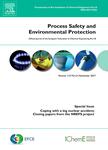版权所有:内蒙古大学图书馆 技术提供:维普资讯• 智图
内蒙古自治区呼和浩特市赛罕区大学西街235号 邮编: 010021

作者机构:Iran Univ Sci & Technol Sch Mech Engn Tehran Iran
出 版 物:《PROCESS SAFETY AND ENVIRONMENTAL PROTECTION》 (Process Saf. Environ. Prot.)
年 卷 期:2025年第195卷
核心收录:
学科分类:0830[工学-环境科学与工程(可授工学、理学、农学学位)] 0817[工学-化学工程与技术] 08[工学]
主 题:Multi-generation system Gasification SOFC Desalination Machine learning optimization
摘 要:Municipal solid waste gasification, an environmentally friendly method that complies with the legal limits of greenhouse gas emissions, has been used in this research to supply fuel for solid oxide fuel cell (SOFC). Using the multi-heat recovery approach, the proposed system can satisfy various demands, including electricity, cooling load, hydrogen, and freshwater for domestic and commercial sectors. This study addresses critical gaps in the existing literature by demonstrating the effectiveness of using a cascaded ORC with LNG for waste heat recovery and evaluating techno-economic and environmental impacts through a comprehensive parametric and sensitivity analysis. The simulation of the proposed system has been implemented in MATLAB software, and the influence of design parameters on system outputs and performance indicators has been discussed through a parametric and sensitivity analysis. Investigations reveal that the fuel utilization factor is the most influential parameter on system outputs, affecting the total exergy efficiency and cost rate by 44.7 % and 46.7 %, respectively. Also, the gasification unit has the largest contribution to the total exergy destruction of the proposed system, accounting for 39.98 % (379.61 kW) due to incomplete combustion and thermodynamically unfavorable chemical reactions. Finally, a new optimization method based on data science and machine learning has been used by incorporating the artificial neural network with the genetic algorithm. According to the tri-objective optimization results, the system s optimal state exhibits a 12.07% enhancement in exergy efficiency, a 7.35% reduction in the cost rate, and a 3.9% rise in CO2 emission index compared to the design conditions.